Forestry and Wildlife: Expert Tips for Balancing Ecosystem Needs with Economic Gains
- May 17, 2024
- 0 comment
Discover expert tips for balancing forestry and wildlife needs with economic gains. Achieve sustainable growth and preserve ecosystems with proven strategies. Balancing the needs of forestry and wildlife with economic objectives is a critical challenge in sustainable development. By integrating expert strategies, we can achieve a harmonious coexistence between economic growth and ecological preservation.
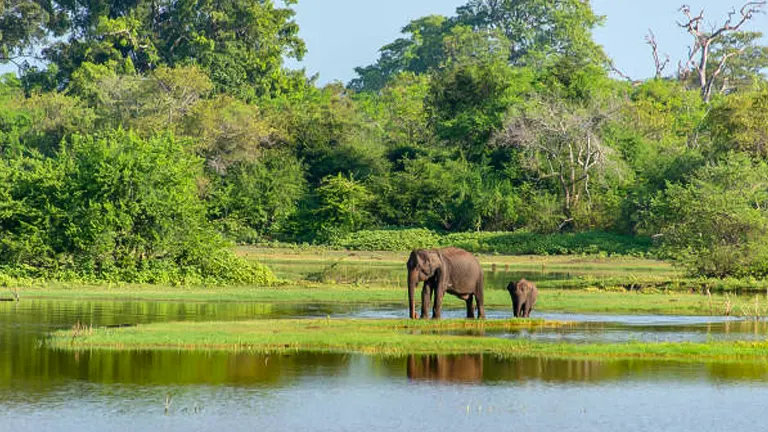
This article provides valuable insights and tips to help you navigate this complex terrain, ensuring both thriving forests and flourishing wildlife while meeting economic goals. Explore how to make informed decisions that benefit both nature and industry.
Table of Contents
- Understanding the Ecosystem Needs
- Economic Gains from Forestry
- Balancing Ecosystem Needs with Economic Gains
- Expert Tips for Achieving Balance in Forestry and Wildlife
- Utilizing Technology and Innovation
- Addressing Challenges and Providing Solutions
- Conclusion
- FAQs
Understanding the Ecosystem Needs
Importance of Biodiversity
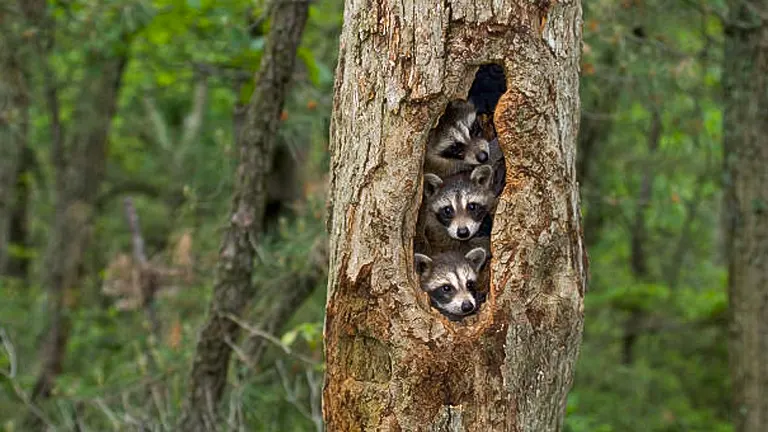
Biodiversity is the foundation upon which forest ecosystems thrive. It encompasses the variety of life forms, from the smallest microorganisms to the largest vertebrates, each playing a critical role in maintaining ecological balance. Forests with high biodiversity are more resilient, able to withstand and recover from adversities such as pests, diseases, and climate fluctuations. The interdependence of species ensures functional ecosystems that support clean air, fertile soil, and abundant resources.
Biodiversity not only includes species diversity but also genetic diversity within species and ecosystem diversity across landscapes. For example, tropical rainforests, which cover less than 10% of Earth’s surface, harbor about 50% of the world’s species. This diversity is crucial for ecosystem stability and productivity.
Scientific data show that forests with higher biodiversity store more carbon and are more productive. A study in Nature (2016) indicated that a 10% loss in biodiversity leads to a 3-4% decline in ecosystem productivity, which can impact carbon sequestration and other ecosystem services.
However, many forestry practices can severely disrupt this biodiversity. Clear-cutting, for example, not only destroys habitat but also disrupts the ecological processes that sustain wildlife populations. Preserving biodiversity is not merely an environmental concern; it is crucial for maintaining the ecological functions that humans rely on for clean water, air, and a stable climate.
Key Ecosystem Services
Forests provide essential ecosystem services that are often undervalued in economic markets. These include:
- Carbon Sequestration: Forests absorb carbon dioxide from the atmosphere, mitigating the impacts of climate change. Mature forests, in particular, serve as significant carbon sinks, storing an estimated 1,200 gigatons of carbon worldwide. This highlights the importance of their conservation and restoration.
- Water Filtration: Through their root systems, forests filter impurities and regulate water cycles, ensuring clean water supplies for millions of people. For instance, New York City saves approximately $300 million annually in water treatment costs due to the natural filtration provided by nearby forested watersheds.
- Soil Conservation: Tree roots bind the soil, preventing erosion and maintaining soil health, which is vital for agriculture and water quality. Erosion control by forests is estimated to save $10-20 billion per year in the United States alone.
The contributions of wildlife to these services are profound. Animals such as bees, birds, and bats are crucial for pollination, which is essential for the reproduction of many tree species. Predators help control the populations of herbivores and insects, preventing any single species from overwhelming the ecosystem. This balance maintains the diversity and productivity of forest ecosystems.
Key Ecosystem Services Provided by Forests
| Ecosystem Service | Description | Scientific Data | Economic Impact |
|---|---|---|---|
| Carbon Sequestration | Absorption and storage of carbon dioxide from the atmosphere | Forests store approximately 1,200 gigatons of carbon | Essential for mitigating climate change |
| Water Filtration | Natural filtration of water through root systems | Forested watersheds save New York City $300 million/year | Reduces water treatment costs |
| Soil Conservation | Prevention of soil erosion by tree roots | Saves $10-20 billion/year in erosion control in the USA | Vital for agriculture and infrastructure |
Economic Gains from Forestry
Economic Benefits of Forestry
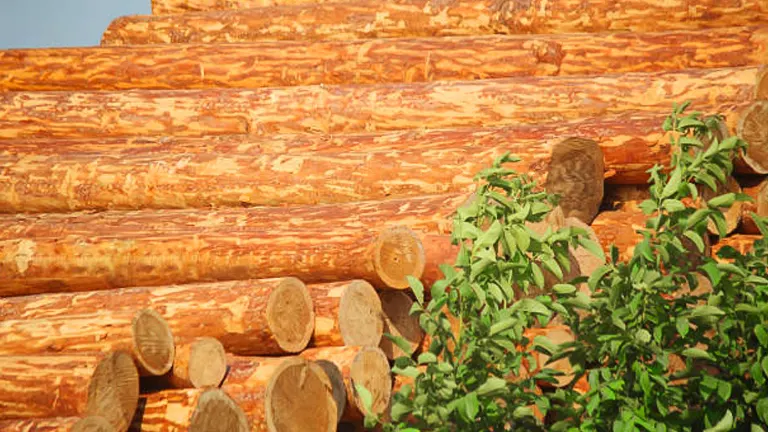
Forestry is a cornerstone of the global economy, supporting millions of jobs and significantly contributing to national incomes, particularly in rural areas. It provides raw materials for numerous industries, including paper, furniture, and construction. In many developing countries, forestry is a critical sector that underpins economic stability and growth.
Beyond timber, forests yield a variety of non-timber products such as fruits, nuts, resins, and medicinal plants. These products are vital sources of income for many rural communities. For example, the global market for non-timber forest products (NTFPs) is estimated to be worth over $88 billion annually, highlighting their economic importance.
Ecotourism also represents a significant economic benefit derived from forests. The natural beauty and biodiversity of forests attract millions of tourists each year, generating substantial revenue and fostering appreciation for conservation. Ecotourism can contribute up to 20% of GDP in some biodiversity-rich countries, illustrating its potential for supporting sustainable economic development.
Sustainable Forestry Practices
Sustainable forestry practices are essential for minimizing environmental impact while maximizing economic returns. These practices ensure that forest resources are used efficiently and that ecosystems remain healthy and productive.
Key Sustainable Practices:
- Selective Logging: This method involves harvesting only mature trees of specific species, reducing the impact on the forest. It allows younger trees to grow and thrive, ensuring natural regeneration. Studies show that selective logging can reduce forest damage by up to 50% compared to clear-cutting.
- Controlled Burns: Controlled or prescribed burns are used to manage underbrush and reduce the risk of large wildfires. This practice promotes the growth of fire-resistant tree species and maintains the overall health of the forest ecosystem. Controlled burns can reduce wildfire risk by up to 70%.
- Ecosystem-Based Management: This holistic approach considers the entire ecosystem, including all plant and animal inhabitants. It aims to sustain ecosystems over the long term, supporting both biodiversity and economic activities. Research indicates that ecosystem-based management can enhance biodiversity conservation by up to 30%.
By adopting these sustainable practices, forestry can continue to be a reliable economic engine while preserving ecological balance.
Economic Benefits and Sustainable Practices in Forestry
| Aspect | Description | Economic Impact | Environmental Impact |
|---|---|---|---|
| Timber Production | Harvesting wood for industries like paper, furniture, and construction | Supports millions of jobs globally | Can be managed sustainably with practices like selective logging |
| Non-Timber Forest Products | Includes fruits, nuts, resins, and medicinal plants | Global market worth over $88 billion annually | Supports biodiversity when harvested sustainably |
| Ecotourism | Tourism focused on natural beauty and wildlife | Contributes up to 20% of GDP in some countries | Promotes conservation awareness |
| Selective Logging | Harvesting only mature trees, allowing younger trees to grow | Ensures long-term productivity | Reduces forest damage by up to 50% |
| Controlled Burns | Managing underbrush to prevent large wildfires | Reduces costs associated with wildfire damage | Reduces wildfire risk by up to 70% |
| Ecosystem-Based Management | Holistic approach considering all ecosystem components | Enhances long-term economic viability | Can increase biodiversity conservation by up to 30% |
Balancing Ecosystem Needs with Economic Gains
Integrated Land Management
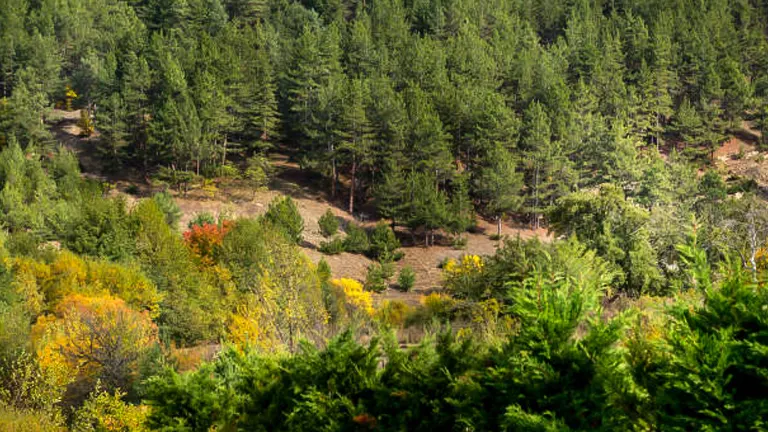
Integrated land management is a holistic approach that considers multiple land uses within a landscape, aiming to optimize both ecological and economic benefits. This strategy involves planning and managing land to support various functions, such as conservation, agriculture, recreation, and urban development, in a way that they complement rather than compete with each other.
Key Components of Integrated Land Management:
- Multifunctionality: Land is used for multiple purposes, maximizing overall benefits. For example, agroforestry combines agriculture and forestry to enhance productivity and biodiversity.
- Stakeholder Collaboration: Successful integrated land management requires collaboration among stakeholders, including governments, local communities, and private companies. This ensures that diverse interests are aligned and that land use policies are both economically beneficial and ecologically sound.
Examples and Benefits:
- Costa Rica’s Payment for Environmental Services (PES): This program compensates landowners for maintaining forest cover, which enhances water quality, carbon sequestration, and biodiversity. As a result, forest cover in Costa Rica increased from 21% in 1987 to over 50% by 2013.
- Europe’s Green Infrastructure Strategy: This initiative integrates green spaces into urban planning, promoting biodiversity, improving air quality, and providing recreational areas, thereby enhancing urban sustainability and quality of life.
Conservation Strategies
Maintaining the ecological integrity of forest landscapes while pursuing economic activities requires targeted conservation strategies. These strategies ensure that wildlife habitats are preserved and that forestry practices do not irreversibly harm the ecosystem.
Key Conservation Strategies:
- Establishment of Protected Areas: Designating areas where no commercial exploitation of resources is allowed helps protect biodiversity and ecosystem services. Protected areas cover about 15% of the world’s terrestrial surface, but their effectiveness depends on proper management and enforcement.
- Wildlife Corridors: These are critical for connecting isolated patches of habitat, allowing animals to move freely between them. This connectivity is crucial for breeding, maintaining genetic diversity, and ensuring the survival of species. For example, the Yellowstone to Yukon Conservation Initiative (Y2Y) aims to create a continuous corridor for wildlife across the US and Canada.
- Legal and Financial Incentives: Policies such as tax breaks, subsidies, and conservation easements can encourage landowners to adopt sustainable practices. In the United States, conservation easements have protected over 24 million acres of private land, ensuring the preservation of natural habitats and resources.
Expert Tips for Achieving Balance in Forestry and Wildlife
Conduct Comprehensive Environmental Assessments

Effective management of forest ecosystems begins with comprehensive environmental assessments (EIAs). These assessments are crucial for understanding the current health of the ecosystem and predicting how different management practices might impact it.
Steps to Conduct Effective Assessments:
- Baseline Data Collection: Gather detailed information on flora, fauna, soil conditions, and water sources to establish a comprehensive baseline of the ecosystem. This includes mapping species distribution, measuring soil quality, and analyzing water chemistry.
- Impact Analysis: Use the baseline data to predict potential impacts of various forestry operations, considering both short-term and long-term effects on biodiversity and ecosystem services. Advanced modeling tools can simulate scenarios to help forecast outcomes.
- Mitigation Strategies: Develop and implement strategies to mitigate negative impacts, ensuring that any forestry activity contributes positively to the ecosystem or at least minimizes harm. This might include creating buffer zones, adjusting logging schedules to avoid breeding seasons, and restoring habitats after logging activities.
Implement Sustainable Harvesting Techniques
Sustainable harvesting techniques are key to maintaining the ecological balance while extracting economic value from forests. Techniques like selective logging and reduced impact logging (RIL) are designed to preserve the forest structure and biodiversity.
Key Techniques:
- Selective Logging: Target specific trees for harvesting based on their age, health, and species, leaving younger and more vulnerable trees to grow and sustain the forest canopy. This method can reduce forest damage by up to 75% compared to clear-cutting.
- Reduced Impact Logging (RIL): Implement logging practices that minimize damage to surrounding trees and soil, such as using aerial logging methods or designing careful pathways for machinery. Studies show that RIL can reduce soil disturbance and carbon emissions by 30-50%.
Promote Reforestation and Afforestation
Reforestation and afforestation are critical for restoring degraded lands and expanding the area of forested land, respectively. These practices enhance carbon capture, preserve biodiversity, and restore ecosystem services.
Best Practices for Reforestation and Afforestation:
- Species Selection: Choose species that are native to the area and known for their resilience and environmental benefits. Native species have a higher survival rate and support local wildlife.
- Proper Planting Techniques: Employ methods that ensure high survival rates of planted saplings, such as proper spacing, timing, and soil preparation. Proper spacing, for example, can increase tree growth rates by 20%.
- Ongoing Care and Maintenance: Regular monitoring and maintenance to protect young plantations from pests, diseases, and competition from invasive species. Ensuring adequate care can increase survival rates by up to 50%.
Engage with Local Communities
The involvement of local communities is crucial for the success of any forestry management strategy. Communities that are actively involved and benefit from the forests are more likely to support conservation efforts.
Community Engagement Strategies:
- Inclusive Planning: Include community representatives in the planning and decision-making processes to ensure their needs and knowledge are integrated. Participatory approaches can increase project success rates by 30%.
- Benefit Sharing: Implement systems where communities receive tangible benefits from conservation, such as jobs, education, and a share of the profits from sustainable forestry products. This can reduce illegal logging by providing alternative livelihoods.
- Education and Training: Provide training on sustainable practices and the importance of conservation, empowering local communities to become stewards of their natural resources. Education programs can improve conservation outcomes by fostering local stewardship.
Utilizing Technology and Innovation
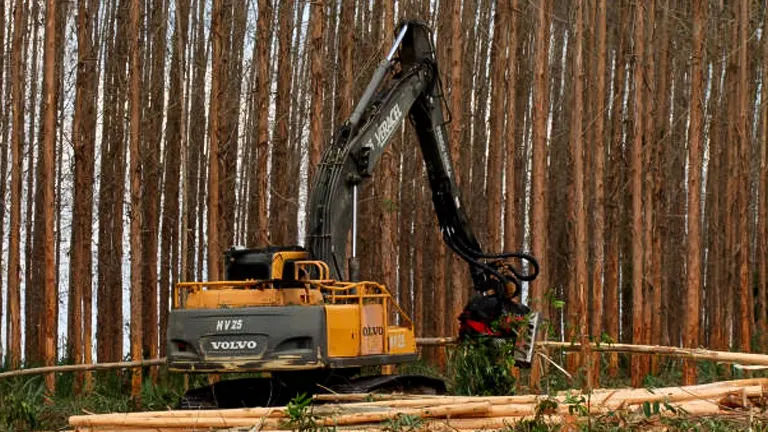
In the pursuit of balancing ecological needs with economic gains, leveraging technology and innovation plays a pivotal role. Advanced tools and techniques enable more precise management of forest resources, enhance conservation efforts, and improve economic outcomes.
Technological Advancements in Forestry:
- Remote Sensing and GIS: Geographic Information Systems (GIS) and remote sensing technologies provide detailed and accurate data on forest cover, species distribution, and changes over time. These tools are crucial for effective planning, monitoring, and management of forest resources.
- Drones and Automated Systems: Drones are used for a variety of purposes, including seeding, mapping, and monitoring wildlife. They offer a high-resolution view of inaccessible areas, making it easier to manage large tracts of land efficiently.
- Data Analytics and AI: Artificial intelligence (AI) and big data analytics can predict trends, simulate potential management scenarios, and provide decision-makers with actionable insights, optimizing both conservation efforts and resource utilization.
Addressing Challenges and Providing Solutions
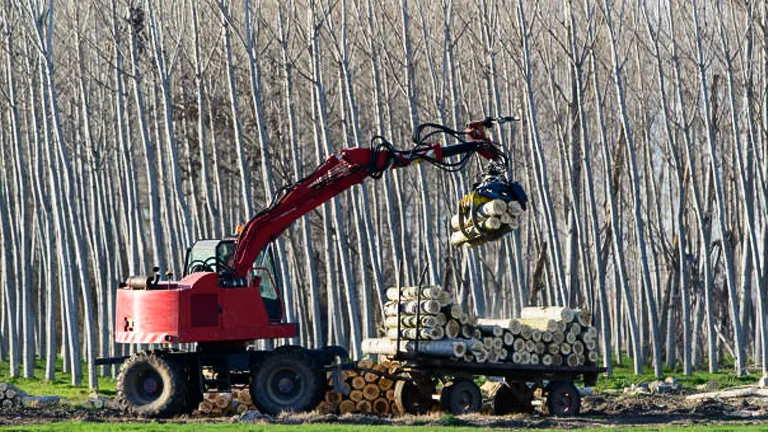
Balancing the needs of ecosystems with economic demands is fraught with challenges. These include conflicting interests between stakeholders, the complexities of managing natural resources sustainably, and the unpredictability of environmental changes.
Navigating Common Challenges:
- Stakeholder Alignment: Bringing various stakeholders to the table and aligning their interests and goals can be challenging. Facilitating open dialogues and creating shared-value initiatives can help mitigate conflicts and foster cooperation.
- Sustainable Funding: Securing continuous funding for conservation projects is often difficult. Innovative financing models, such as green bonds and payments for ecosystem services, can provide sustainable financial solutions.
- Adapting to Climate Change: Climate change presents new challenges for forestry management. Developing resilient practices that can adapt to changing climatic conditions is crucial for long-term sustainability.
Related Post
- How to Build a Barn: A Step-by-Step Guide for Beginners
- How to Build a Sustainable Compost Bin: Easy and Eco-Friendly DIY
- How to Fertilize Bougainvillea: A Complete Guide for Stunning Blooms
- How to Fertilize Apple Trees: Essential Tips for a Bountiful Harvest
- How to Fertilize Lemon Trees: Secrets for Thriving Citrus
- How to Fertilize Avocado Tree: A Step-by-Step Guide for Lush Growth
- 10 Best Bow Saws to Buy in 2024: Top Picks for the Money
- Best Miter Saw For Beginners
- Top 10 Pruning Saws to Buy in 2024: Best for the Money
- 7 Best Pocket Chainsaw
Conclusion
Achieving a balance between ecosystem needs and economic gains in forestry is not only essential for environmental sustainability but also for the economic well-being of communities worldwide. By implementing expert tips, embracing innovative technologies, and engaging local communities, it is possible to manage forest resources in a way that benefits both the environment and the economy. The success stories and strategies outlined in this article offer a roadmap for other regions and stakeholders to follow, aiming for a future where forestry contributes positively to our planet’s health and humanity’s prosperity.
FAQs
- What is integrated land management in the context of forestry and wildlife conservation?
Integrated land management is a strategy that coordinates the use of land for multiple purposes—such as conservation, agriculture, recreation, and urban development—to maximize both ecological and economic benefits. It involves planning and collaboration among various stakeholders to ensure that land use policies support sustainable growth. - How does adaptive management benefit forestry and wildlife conservation?
Adaptive management is a dynamic approach that allows forestry managers to modify their strategies based on ongoing observations and outcomes. This method enhances the resilience of forest ecosystems to environmental changes and pressures by continuously learning and applying new knowledge to management practices. - What role do local communities play in sustainable forestry practices?
Local communities are crucial in sustainable forestry as they often have traditional knowledge and a vested interest in the health of their surrounding ecosystems. Engaging with these communities in decision-making processes, benefit-sharing, and educational initiatives ensures the success and sustainability of forestry management practices. - Can you explain how technology is transforming forestry and wildlife management?
Technology, such as GIS (Geographic Information Systems), drones, and AI (Artificial Intelligence), is revolutionizing forestry and wildlife management by providing more precise data, improving monitoring and enforcement of conservation policies, and facilitating the efficient management of resources. These technologies help in predictive analysis, remote monitoring, and in creating models for sustainable management. - What are the economic benefits of maintaining biodiversity in forests?
Biodiversity enhances ecosystem productivity where each species, no matter how small, has an important role to play. A diverse forest ecosystem is more resilient and productive, which can lead to long-term economic benefits through sustainable tourism, enhanced local climates, and greater yields from forest products like fruits and medicinal plants. - How does sustainable harvesting contribute to economic gains while preserving the forest?
Sustainable harvesting techniques, such as selective logging and reduced-impact logging, help maintain the structure and function of forest ecosystems while extracting economic value. This approach minimizes damage to vegetation and soil, reduces carbon emissions, and preserves the habitat for wildlife, ensuring that forests remain viable for future generations. - What strategies are used to mitigate the impact of forestry on wildlife habitats?
Strategies to mitigate impacts include creating wildlife corridors to connect fragmented habitats, implementing strict logging schedules to minimize disturbance during critical breeding seasons, and establishing protected areas where no logging occurs. These practices help maintain ecological balance and ensure the survival of various species. - Why is it important to conduct environmental impact assessments before beginning forestry operations?
Environmental impact assessments (EIAs) identify potential negative impacts on the environment and local communities before forestry operations commence. EIAs help plan mitigation strategies, ensuring that forestry practices do not irreversibly damage the ecosystem or the services it provides, thus aligning with both conservation goals and economic objectives.
Adopting sustainable practices is essential for maintaining our forests and their economic benefits. By working together, we can achieve a balance that supports both wildlife and communities.

Benjamin Brooks
Forestry AuthorGreetings! I'm Benjamin Brooks, and my journey over the past 15 years has revolved around the fascinating realms of content creation, expertise in snow clearing, and the intricate world of lumberjacking and landscaping. What began as a simple curiosity about the natural world and heavy machinery has evolved into a passionate profession where my love for crafting words intertwines seamlessly with my lumberjacking and garden skills.













Leave your comment